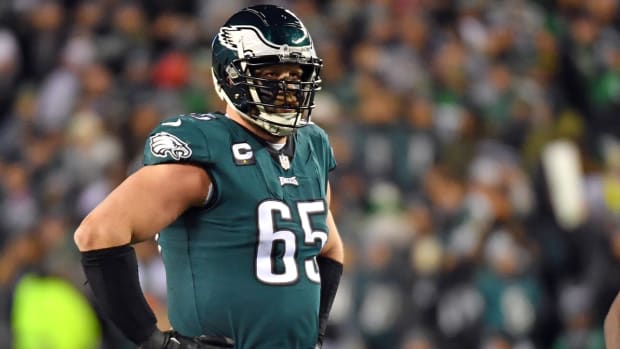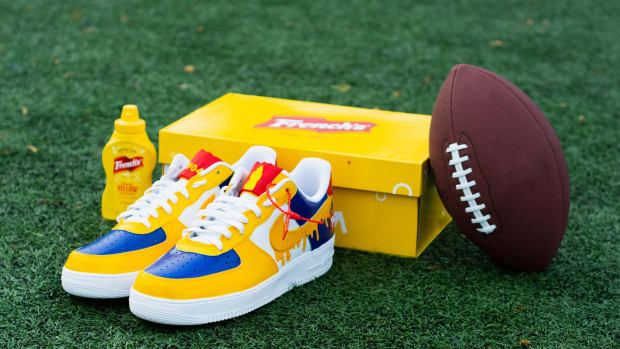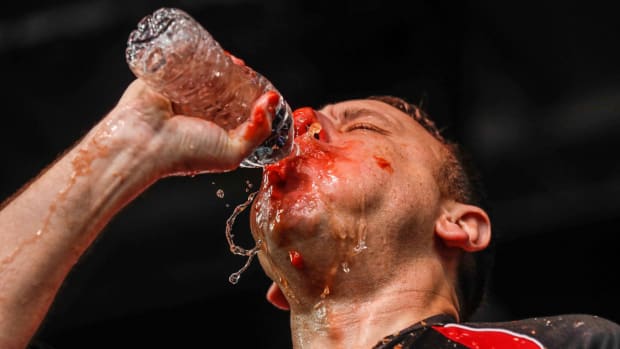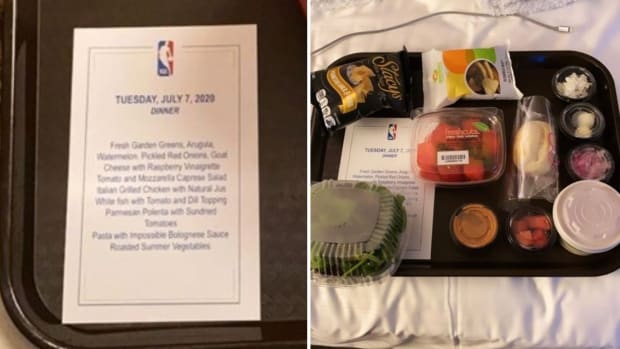The Definitive Guide to the Triple Crown Cocktails
The colts. The costumes. The cocktails. It’s the first week of May, which means the race for the 2018 Triple Crown takes off this Saturday, beginning with the 144th Kentucky Derby in Louisville. And what’s an afternoon at one of those famed tracks without one of their signature drinks? To get you set for horse racing’s “mane” event, we take you through tracks, bars and restaurants nationwide for a closer look at three classic cocktails and some of the creative ways bartenders and mixologists change them up.
Kentucky Derby: The Mint Julep
“Cool as Kentucky. Fresh as Spring.” The mint julep became the official drink of the Kentucky Derby in 1938, and since then, it’s become as synonymous with Churchill Downs as those crazy hats and even the all-important horses are. Nearly 120,000 of the drinks are served over race weekend, which requires north of 10,000 bottles of bourbon, 1,000 pounds of mint, 60,000 pounds of ice—and a whole bunch of those glasses, engraved with the names of all the previous winners of the event. It’s a relatively routine drink: create syrup by combining and cooling sugar, water and mint, then add it to a glass with bourbon or rye whiskey and garnish with more mint. Simple, but effective.
The Derby’s official julep recipe calls for two ounces of Old Forester Straight Bourbon Whiskey, but other places nationwide mix things up a bit. Redbird in Los Angeles—which has an entire menu of thoroughbred-racing-inspired libations—makes its juleps with Wild Turkey Rare Breed, also a straight bourbon whiskey but with 13% more alcohol than Old Forester. Redbird is hosting a Kentucky Derby-themed brunch on race day this weekend, where they will show off their whole line of race day cocktails.
The story goes that Kentucky politician Henry Clay introduced the julep to the nation’s capital sometime in the early 19th century—to help curry favor before one of his many unsuccessful presidential bids, no doubt!—and it’s been a staple at the Willard InterContinental’s Round Robin Bar in Washington, D.C., for decades. Bartender Jim Hewes says he makes a least two dozen a day during the summer. He usual recipe: Maker’s Mark as his base and, for a twist, two ounces of sparkling water and a lemon peel for garnish.
Preakness Stakes: Black-Eyed Susan
The mint julep has been a figure of the Kentucky Derby for close to a century, and the makeup of the drink has, more or less, stood the test of time. The Preakness Stakes in Maryland has sported the Black-Eyed Susan as its official drink since 1973, but while the name has persisted, the components have changed often. Early versions consisted of vodka, rum and triple sec, mixed with orange and pineapple juice. Peach schnapps has been used, and grapefruit juice got an audition as well. In recent editions, the old standbys of vodka and orange juice are still present, but bourbon and sour mix get tossed in as well.
Basically, there’s no one right way to make a Black-Eyed Susan, which makes a Baltimore Sun “competition” to find the best variation on the theme that much more interesting. Aylen Beazley-Maquehue of Holy Frijoles in Baltimore has designed a neat, colorful mixed drink mix-up that she calls the Black-eyed Cacti. The vodka is still there, but pineapple juice replaces orange juice, and tequila and blue Curacao liqueur are added to give the drink a little color and a lot of punch. Normally a cherry acts as the “black eye,” but here, it’s a blackberry, which sinks beneath the Curacao strata to the bottom of the glass.
Elsewhere, Brendan Dorr of Baltimore’s B&O American Brasserie, believes that the “traditional” recipe is too simple and builds his variation through more extravagant components. The original recipe calls for light rum, but he uses dark, and mixes it with a cherry-flavored liqueur, orange bitters and agave nectar. The customary orange juice is there, but red grapefruit juice and lime juice come along for the ride as well.
Belmont Stakes: The Belmont Jewel (for now)
The drink of the Triple Crown’s first leg has remained mostly unchanged for 80 years. At the second leg, the ingredients have changed while the name has stayed the same. But at the third leg, the Belmont Stakes in New York, there have been three different official drinks over the last two decades.
For a while, the Belmont’s official drink was the White Carnation, named, like the Black-Eyed Susan at Pimlico, for the garland of flowers that is draped over the flank of the winning horse. That drink mixed vodka, peach schnapps, orange juice and club soda in a martini glass, topped off with a “splash” of cream, the “white” in White Carnation.
It never really caught on, and in 1997 it was replaced by the Belmont Breeze. Dale DeGroff designed the drink when he was head bartender of The Rainbow Room in New York City, saying that he believed a racetrack drink ought to be whiskey-based. Accordingly, his bid for the Belmont’s top beverage featured bourbon whiskey and a few kinds of sherry with lemon, orange and cranberry juice, some seltzer water and possibly 7 Up if you want. (For the record, DeGroff makes his mint julep with cognac and a little rum to go with the typical bourbon base.)
The Belmont Breeze was supposedly created with a younger crowd in mind, and it lasted for a little over a decade before it, too, was replaced in 2011 by the Belmont Jewel, a much simpler drink that is easier to mass-produce and is “more fan-friendly." Mixologist Drew Revella’s concoction truly is simple: all it takes is some bourbon, lemonade and pomegranate juice, mixed together and served on the rocks in a small glass. The Jewel has been the drink of the Triple Crown’s third jewel for a few years now, and we’ll have to see if its simple structure helps it become entrenched as an annual tradition like the other two drinks.







